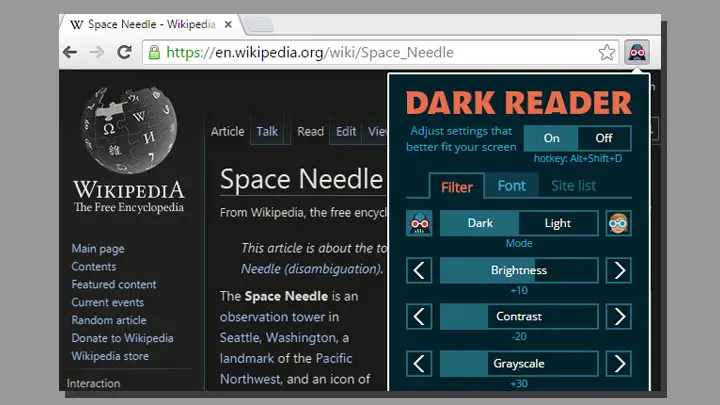Some people call it Dark Mode, others refer to it as Night Mode. Whatever you call it, dark interfaces are all the rage, from Adobe’s professional software suite to the latest version of macOS and hundreds of iOS apps. Now, a Safari extension called Dark Reader promises to do the same with every single website out there.
Dark or night mode–not to be confused with Apple’s Night Shift, an iOS feature that lowers the temperature of the screen to make it warmer to avoid disturbing your sleeping patterns–reverses the reigning color palette of the web, turning white backgrounds black or dark gray to offer more contrast with buttons, icons, and text. Dark mode proponents say while it won’t reduce eye strain, it provides a more relaxing user experience because it reduces the amount of light your eyes are exposed too: Computer light, especially at the typical cool temperature of LCDs, can allegedly affect your sleep patterns. Some usability people claim that, while black type on white background is more readable than white on black, it fatigues your eyes.

That means Dark Reader, which is a Chrome, Firefox, or Safari extension, won’t save you any battery power. But it will display any website in a dark mode palette–and crucially, it lets you adjust specific aspects of the display for your needs. That makes it more of a custom design extension that could be useful for accessibility purposes. You can make changed and adjustments on the fly, which could be a major boon for people who have trouble reading typical websites.
You can download it here for free for Chrome and Firefox, but the newly released Safari version will run you $4.99.
Recognize your brand’s excellence by applying to this year’s Brands That Matter Awards before the early-rate deadline, May 3.